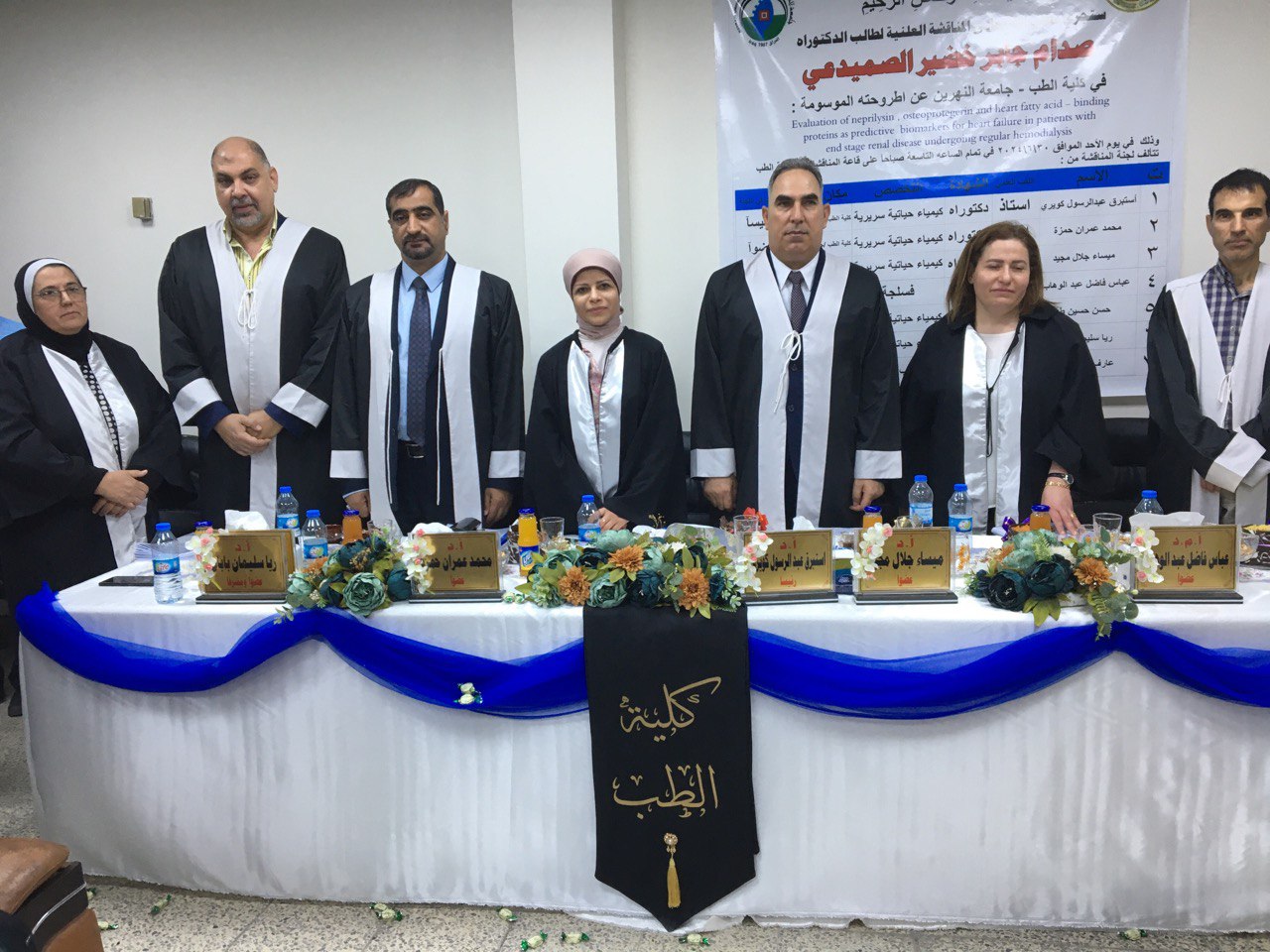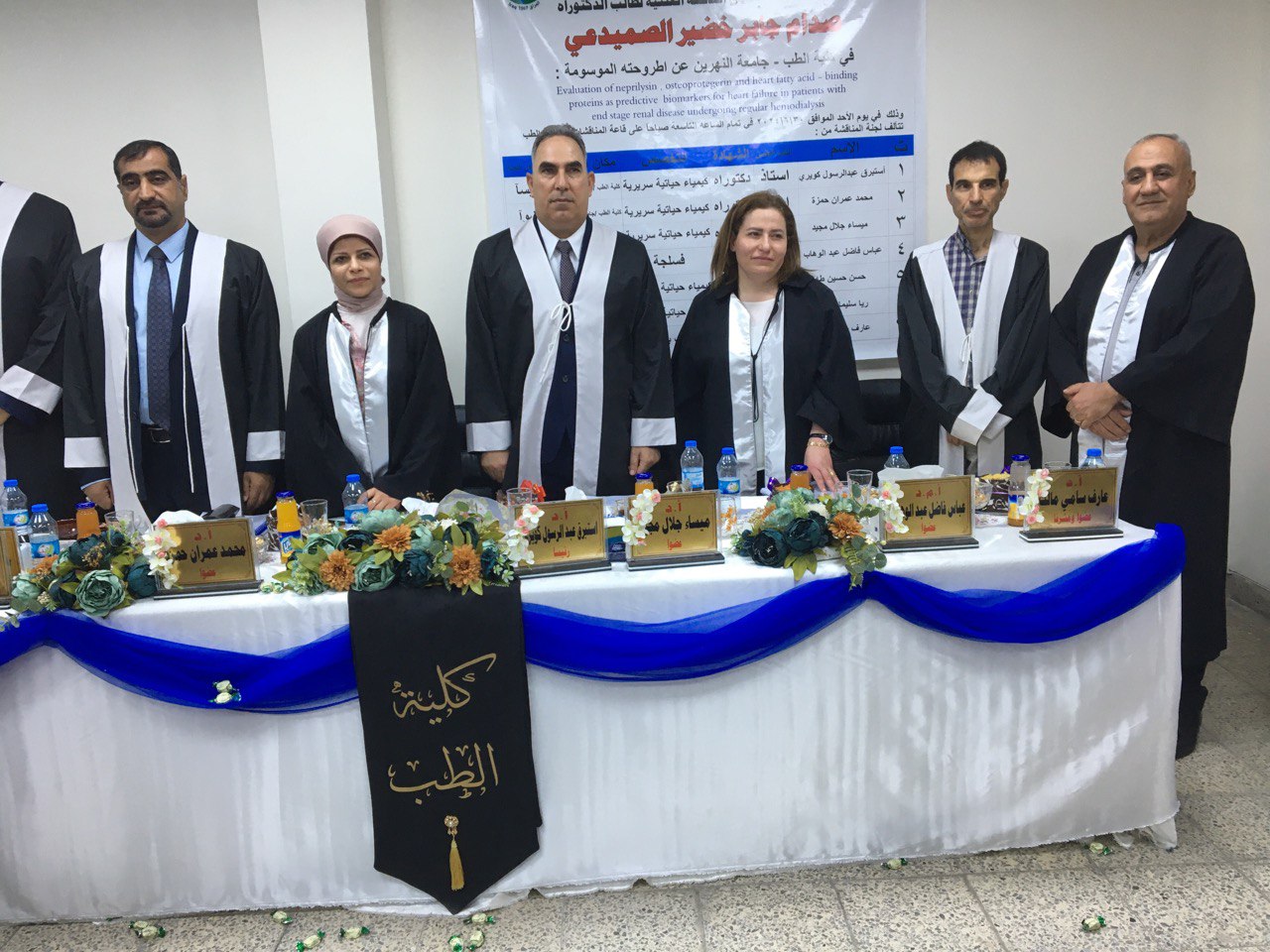On Sunday, June 30, 2024, the doctoral dissertation of student (Saddam Jabir Khudair) was discussed at 9:00 AM in the discussion hall of the Department of Chemistry and Biochemistry/Clinical Biochemistry on his thesis entitled: "Evaluation of Neprilysin, Osteoprotegerin, and Heart Fatty Acid-Binding Proteins as Predictive Biomarkers for Heart Failure in Patients with End-Stage Renal Disease Undergoing Regular Hemodialysis" **Objective of the study:** 1. To measure and compare the levels of neprilysin, osteoprotegerin, and heart fatty acid-binding proteins in chronic kidney disease patients undergoing regular hemodialysis, distinguishing between those with and without heart failure, and to evaluate the effectiveness of these biochemical markers in identifying subgroups of heart failure patients based on the severity of left ventricular ejection fraction reduction. 2. To investigate the relationship between the levels of neprilysin, osteoprotegerin, and heart fatty acid-binding proteins and biochemical markers such as urea, creatinine, albumin, lipids, calcium, potassium, phosphate, body mass index, duration of hemodialysis, and anemia levels in patients. **Results:** The study compares various variables between two groups of hemodialysis patients: those without heart failure (HD-NHF) and those with heart failure (HD-HF). The results indicated that the HD-HF group had significantly higher mean ages and levels of OPG, NEP, HFABP, cholesterol, triglycerides, VLDL, and LDL compared with the HD-NHF group. The p-values associated with these differences were as follows: 0.01, <0.001, <0.001, <0.001, <0.001, 0.01, 0.01, and <0.001, respectively. Specifically, mean OPG, NEP, and HFABP levels were more than double, and mean LDL levels were more than 35% higher in HD-HF. Notably, all of these differences had p-values well below 0.01 and were highly statistically significant. **ROC Curve Analysis:** The results of each of the three biomarkers OPG, NEP, and HFABP were very valuable in determining the difference between HD-HF and HD-NHF, and their area under the curve was (AUC 0.922, 0.886, and 0.860, respectively). Logistic regression found OPG to be the strongest predictor of HD-HF versus HD-NHF, followed by NEP with an odds ratio of 1.01 and 8.71, respectively. HFABP was also significantly predictive, with an odds ratio of 1.09. When comparing the levels of all biomarkers in the three groups (HD-HF, HD-NHF, and HFrEF), it was found that their highest levels were in the HFrEF groups. **The discussion committee consisted of:** - Prof. Istabraq Abdulrasool Kwayri (Chair) - Prof. Mohammed Omran Hamza (Member) - Prof. Maysaa Jalal Majid (Member) - Assoc. Prof. Abbas Fadel Abdulwahab (Member) - Assoc. Prof. Hassan Hussein Taha (Member) - Prof. Riya Suleiman Baban (Member and Supervisor) - Prof. Arif Sami Malik (Member and Supervisor) The dissertation was accepted successfully with distinction. 

|